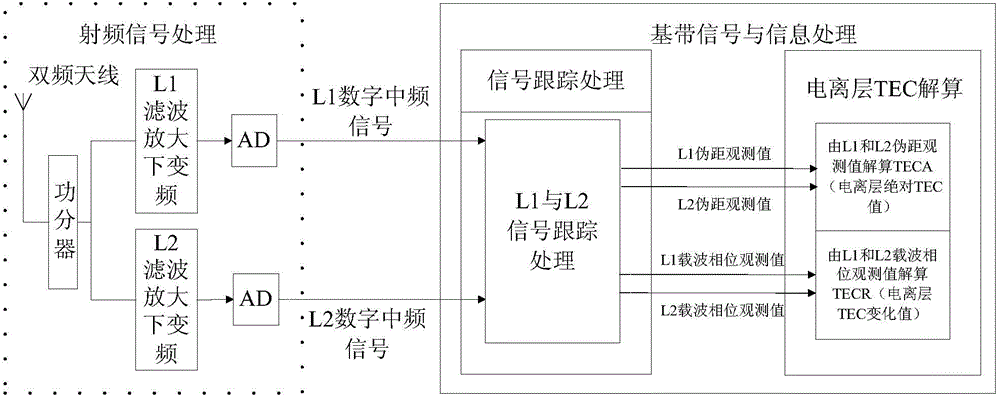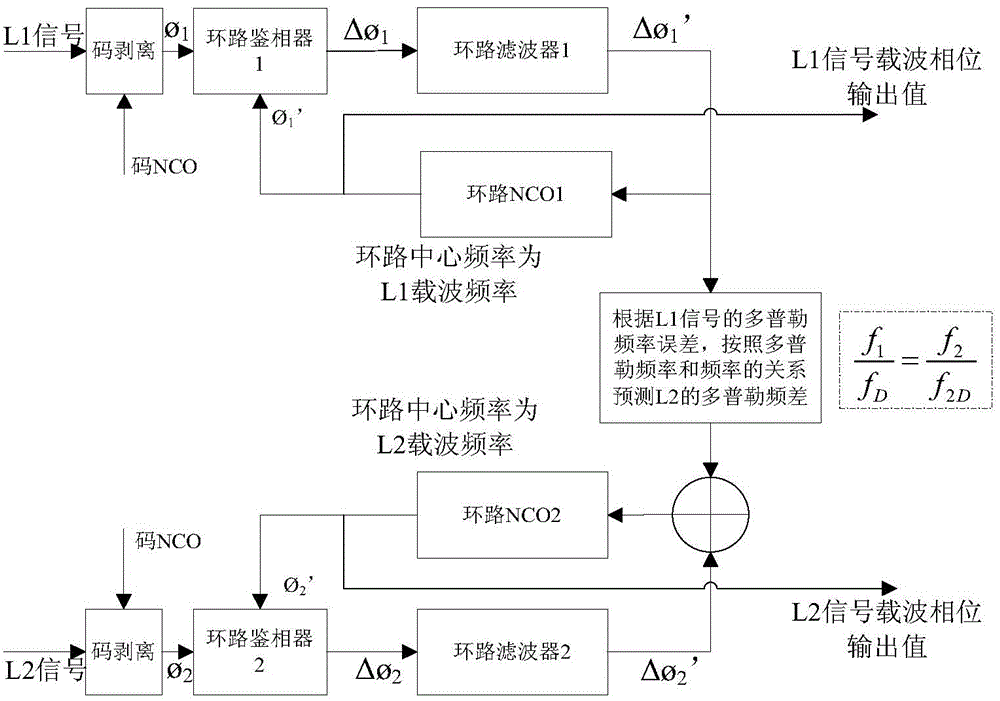GNSS baseband signal processing method for ionospheric total electron content monitoring
A technology of baseband signal processing and total electronic content, which is applied in measuring devices, radiation measurement, X/γ/cosmic radiation measurement, etc., can solve the problem of large tracking loop bandwidth, ionospheric carrier TEC error, and tracking dual-frequency carrier error Large and other problems, to achieve the effect of improving tracking sensitivity, improving monitoring accuracy, and high precision
- Summary
- Abstract
- Description
- Claims
- Application Information
AI Technical Summary
Problems solved by technology
Method used
Image
Examples
Embodiment Construction
[0034] combine Figure 4 and Figure 5 Give a more detailed explanation. A kind of GNSS baseband signal processing method of ionospheric total electron content monitoring of the present invention comprises:
[0035] Step 1, in the tracking stage of the GNSS dual-frequency signal of the common star, the dual-frequency carrier tracking loop performs closed-loop tracking of the dual-frequency carrier signal, and the tracking steps are:
[0036] The output result of loop phase detector 2 is multiplied by coefficient k1 and transformed to obtain transformed value;
[0037] The output result of the loop phase detector 1 is summed with the transformation value, and multiplied by coefficient k2 as the input of the loop filter 1; the output result of the loop phase detector 1 is made difference with the transformation value, And multiplied by the coefficient k3 as the input of the loop filter 2;
[0038] The loop filter 1 filters the input of the loop phase detector 1 and outputs t...
PUM
 Login to View More
Login to View More Abstract
Description
Claims
Application Information
 Login to View More
Login to View More - R&D
- Intellectual Property
- Life Sciences
- Materials
- Tech Scout
- Unparalleled Data Quality
- Higher Quality Content
- 60% Fewer Hallucinations
Browse by: Latest US Patents, China's latest patents, Technical Efficacy Thesaurus, Application Domain, Technology Topic, Popular Technical Reports.
© 2025 PatSnap. All rights reserved.Legal|Privacy policy|Modern Slavery Act Transparency Statement|Sitemap|About US| Contact US: help@patsnap.com



